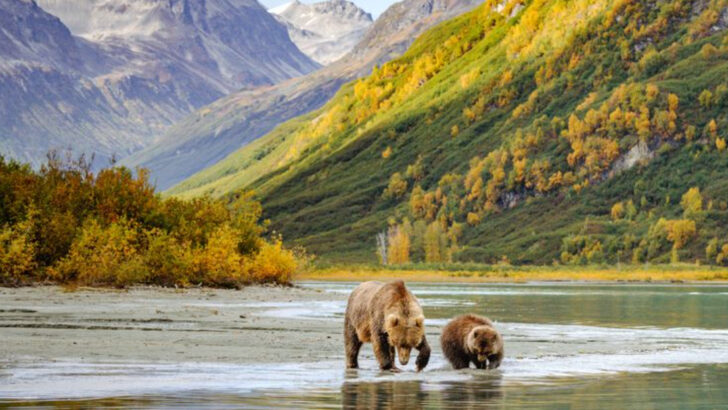Glacier National Park isn’t just wild—it’s bear country.
This is where nature roars back.
Where towering peaks, icy lakes, and thick forests serve as home turf to the largest population of wild bears in America.
We’re talking about grizzlies and black bears living their best untamed lives—hunting, foraging, and occasionally reminding hikers who’s boss.
It’s raw. It’s beautiful. And it’s unlike anywhere else in the country.
But there’s more to this bear haven than just numbers.
From bear behavior to conservation quirks, Glacier is full of surprises.
Step off the beaten path (carefully), and you’ll uncover a side of the park that’s powerful, mysterious, and pulsing with life.
Ready to dive into ten wild facts about this beast-filled paradise?
Let’s go where the paw prints lead.
Bear Diversity
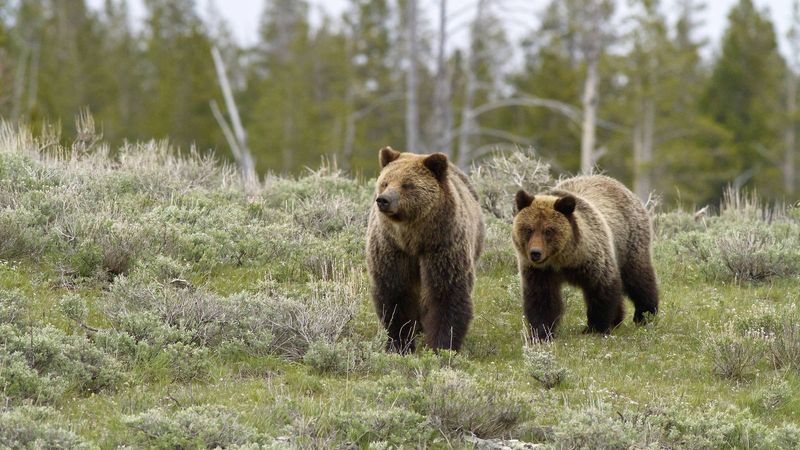
In the dense forests of Glacier National Park, bear diversity thrives. With their shaggy fur and distinct features, both grizzlies and black bears call this park home.
The grizzlies, with their iconic humped shoulders, roam vast areas in search of food. Black bears, smaller yet agile, navigate the park’s varied terrain with ease.
Visitors often spot these majestic animals near berry patches or fishing in streams. Their presence symbolizes the park’s rich biodiversity, offering a glimpse into the wild heart of nature. This coexistence highlights the delicate balance maintained within this pristine ecosystem.
Bear Habitats
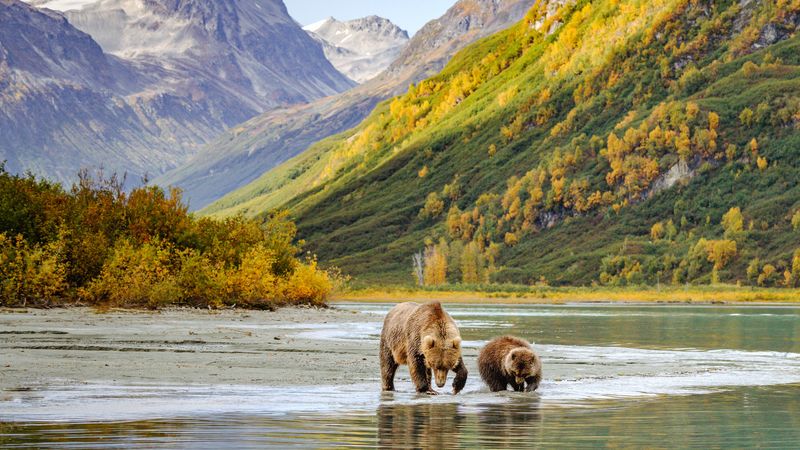
Glacier National Park is a sanctuary for bear habitats, offering a mix of dense forests, alpine meadows, and rushing streams. These varied environments support the bears’ diverse lifestyles and nutritional needs.
In spring, bears emerge from hibernation, exploring the park’s rich flora for sustenance. The lush greenery and plentiful water sources provide an ideal home for these majestic creatures. As the seasons change, so do the bears’ habitats, adapting to the shifting climate and food availability.
This dynamic environment ensures a thriving bear population, living harmoniously with the land.
Bear Behavior
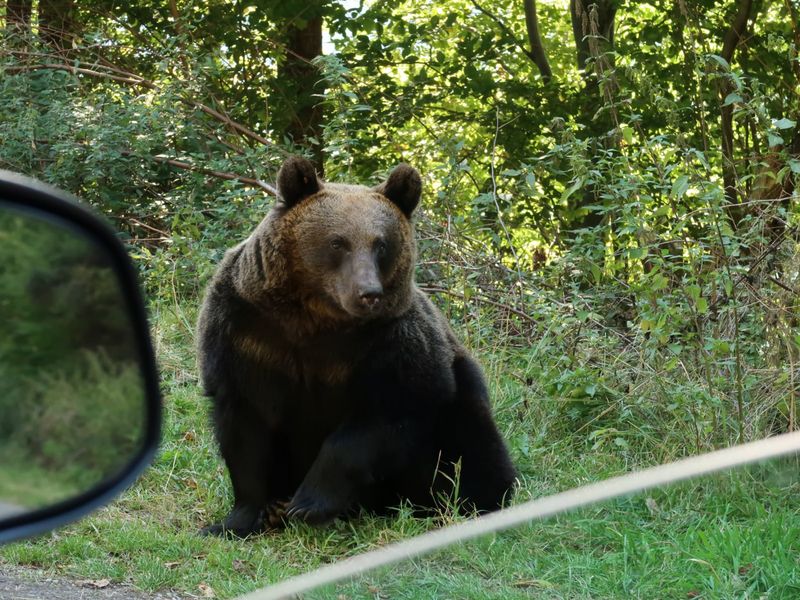
Observing bear behavior in Glacier National Park is a captivating experience. These intelligent creatures exhibit a wide range of activities, from playful antics to strategic hunting.
In early summer, bears can be seen fishing for salmon, showcasing their incredible patience and skill. Families of bears often engage in playful tussles, strengthening social bonds and learning survival techniques.
Their behaviors reflect the intricate social structures and survival strategies developed over generations. Witnessing these interactions provides insight into the complex lives of bears, underscoring the importance of preserving their natural habitats.
Bear Conservation
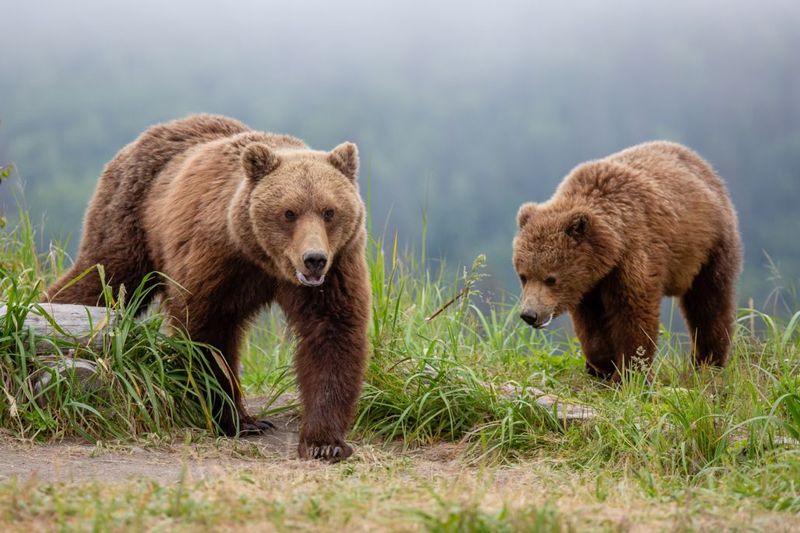
The commitment to bear conservation in Glacier National Park is unparalleled. Efforts include habitat restoration and scientific research to ensure these animals thrive. Rangers and biologists work tirelessly tagging bears, tracking their movements, and studying their health to mitigate human-bear conflicts.
Education programs raise awareness about the importance of coexisting with bears and protecting their habitats. Conservation strategies are continually evolving, incorporating the latest research and technology to support these vital initiatives.
Through these efforts, the park aims to maintain its status as a premier sanctuary for wild bears.
Visitor Guidelines
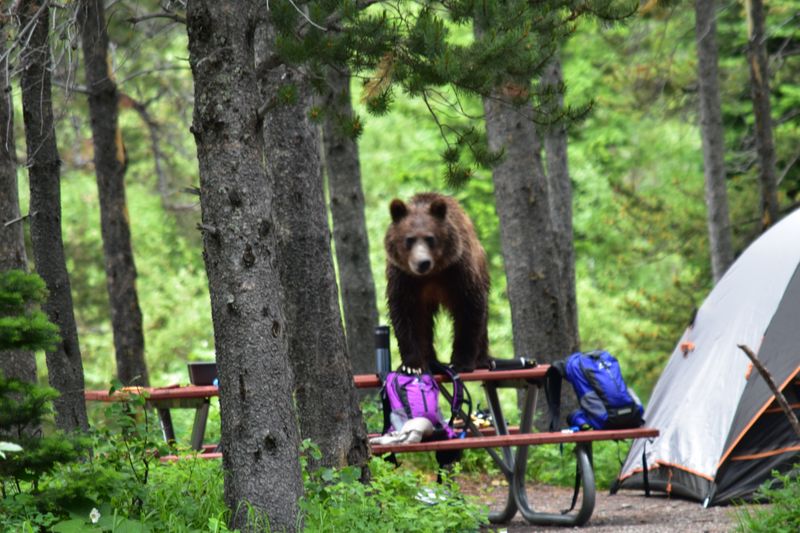
Visitor guidelines in Glacier National Park are crucial for ensuring safety while observing bears. Clearly posted signs and ranger-led programs educate visitors on maintaining a respectful distance and avoiding bear interactions.
The park emphasizes the importance of not feeding bears, as human food can disrupt their natural diet and behaviors. Staying in groups and making noise while hiking helps deter unexpected bear encounters.
These guidelines are designed to protect both visitors and bears, fostering a safe environment for all. By following the rules, visitors contribute to the preservation of this majestic wildlife sanctuary.
Bear Watching Points
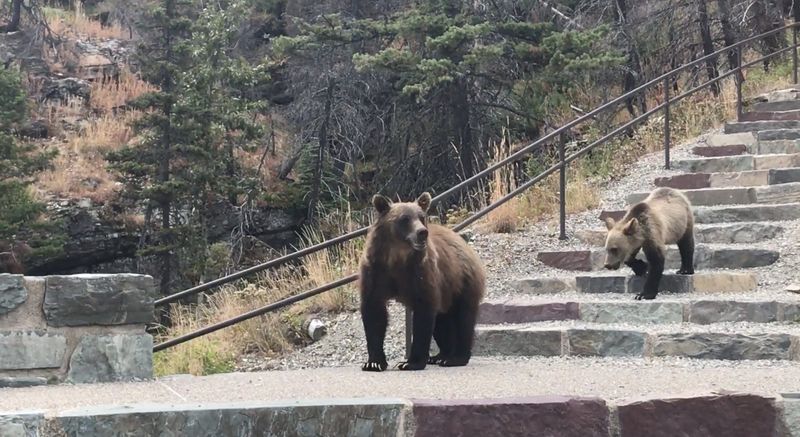
In Glacier National Park, several designated bear-watching points provide breathtaking views. Enthusiasts can safely observe these majestic creatures from a distance. Each point is strategically located, offering unique vantage spots.
Most areas are equipped with interpretive boards detailing bear behaviors. Rangers are often available to share insights and ensure safety. Photographers find these spots a paradise, capturing bears amidst scenic backdrops.
Witnessing bears in the wild is an awe-inspiring experience. The thrill of observing them interact naturally is unmatched, creating memories etched in nature’s grandeur.
Bear Diet and Foraging
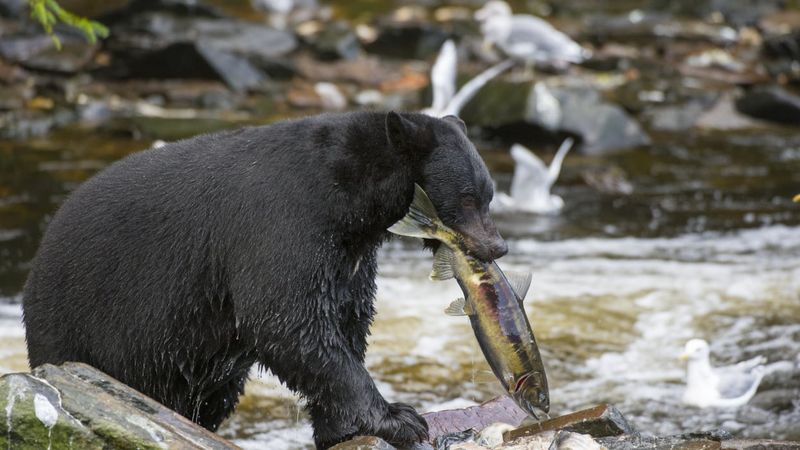
Bears in Glacier National Park boast a diverse diet, foraging across the varied landscape. From berries to fish, their culinary habits are fascinating.
In summer, lush berries and insects become primary food sources. Bears are also adept fishers, catching salmon from streams. Foraging is both a survival skill and a social activity.
The park’s abundant resources ensure bears are well-nourished. Observing a bear delicately picking berries or skillfully fishing offers insight into their adaptability and intelligence. These dietary habits are essential for their survival and play a crucial role in the park’s ecosystem.
Historical Bear Encounters
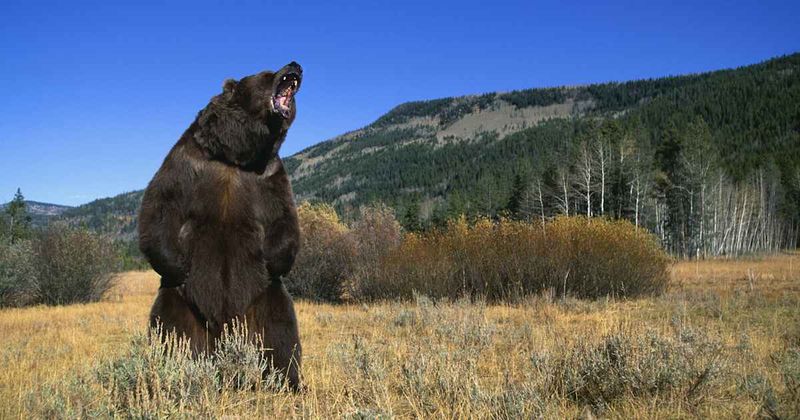
Historically, Glacier National Park has been a site of memorable bear encounters. Early explorers often recounted tales of surprise meetings with these impressive animals.
In the early 1900s, bears were a common sight for travelers. Vintage photographs capture these moments, depicting bears alongside explorers in classic attire. Such encounters, though thrilling, were met with equal caution.
These historical interactions highlight the park’s long-standing relationship with its bear population. Today, visitors are encouraged to learn from the past, respecting bears’ space and preserving this unique coexistence. Reflecting on these stories adds depth to the park’s narrative.
Bear Hibernation Patterns
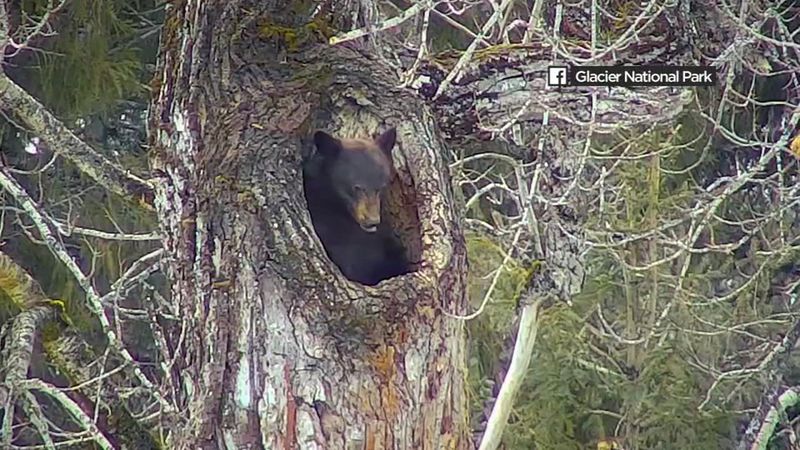
Bears in Glacier follow distinct hibernation patterns, crucial for their survival. As winter approaches, these creatures retreat to their dens.
Hibernation is a time of restoration, with bears entering a state of reduced metabolic activity. They rely on stored fat accumulated during active months.
The park’s diverse terrain provides ideal denning locations, from hollow trees to caves. Observing the subtle signs of hibernation, like tracks leading to dens, enriches the understanding of bears’ life cycles. Their ability to endure harsh winters is a testament to nature’s resilience and adaptability.
Cultural Significance of Bears
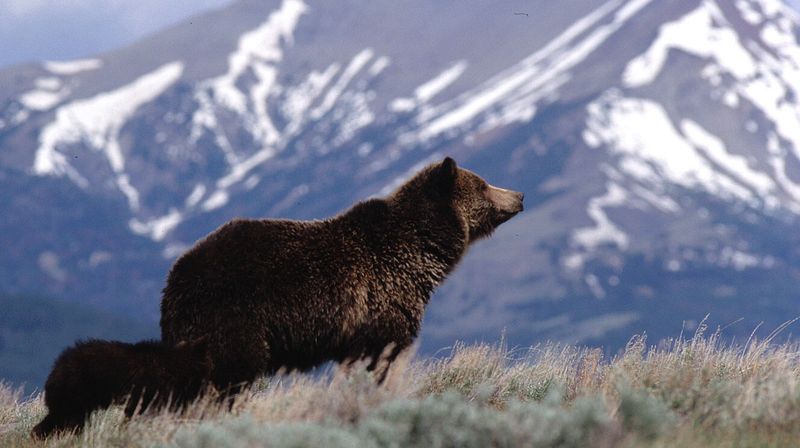
Bears hold profound cultural significance for indigenous tribes around Glacier National Park. They are seen as symbols of strength and wisdom.
Native American folklore often features bears as central figures, embodying spiritual connections. Artwork and traditions continue to honor these majestic animals. Understanding this cultural heritage enriches the experience of visiting the park.
It adds layers of meaning to observing bears, transcending mere wildlife viewing. Visitors are encouraged to appreciate this cultural perspective, fostering respect and harmony with the natural world. These traditions underscore the timeless bond between people and bears.

